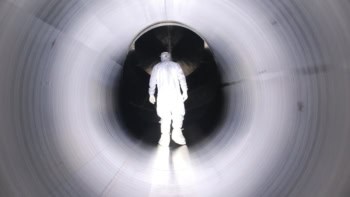A team of physicists at the Weizmann Institute of Science in Israel has discovered a particle with a charge of e/5, where e is the charge on an electron. Moty Heiblum and co-workers made the discovery by studying the behaviour of low-temperature two-dimensional electron gases in high magnetic fields. The findings lend further weight to the "quasiparticle" theory developed by Robert Laughlin of Stanford University to describe the fractional quantum Hall effect, and for which he shared last year's Nobel prize with Horst Störmer and Daniel Tsui.
In 1980 Klaus von Klitzing discovered that the so-called Hall conductance across a material varied in steps, not continuously, as the magnetic field was changed. In other words the Hall effect was quantized. The size of the steps was related to the charge of the electron. In 1982 Störmer and Tsui discovered the fractional quantum Hall effect, which suggested the existence of charge carriers with a charge of e/3.
To explain these findings, Laughlin proposed that the electrons combine with the magnetic “flux quanta” to form quasiparticles, and that the flux lines effectively “shield” the charge on the electron. A quasiparticle made from two flux quanta and one electron, for instance, would have a charge of e/3. Subsequent experiments have suggested, indirectly, other quasiparticles with charges of e/5, e/7 and so on.
In the mid-1990s Heiblum’s team and teams in France and the US found direct evidence for quasiparticles with a charge of e/3. The Weizmann team has now developed a more sensitive version of their earlier experiment. They embedded a tiny point contact within the two-dimensional electron gas to separate the quasiparticles according to their charge and found evidence for the elusive e/5 particles (M Reznikov et al . 1999 Nature 399 238).



